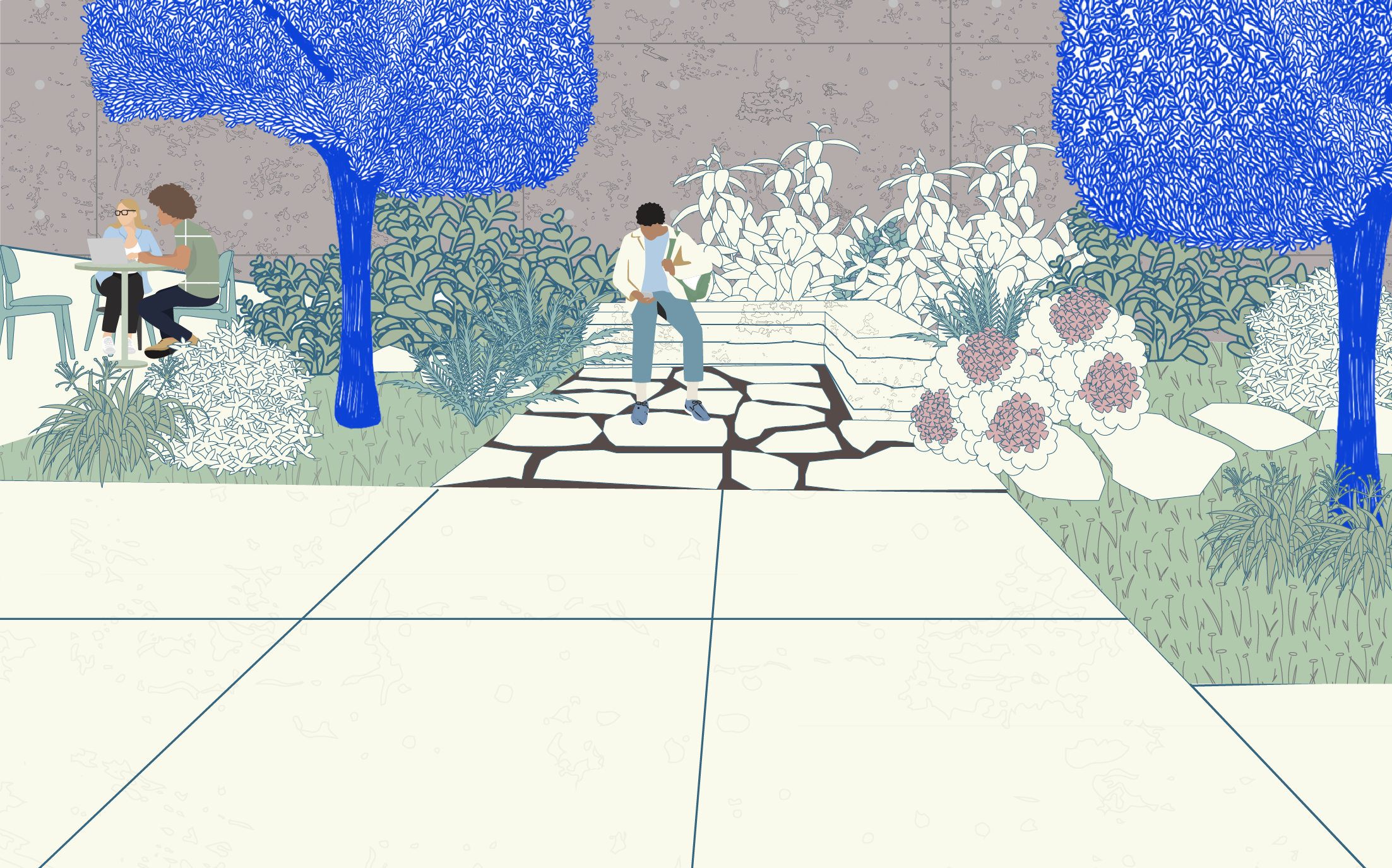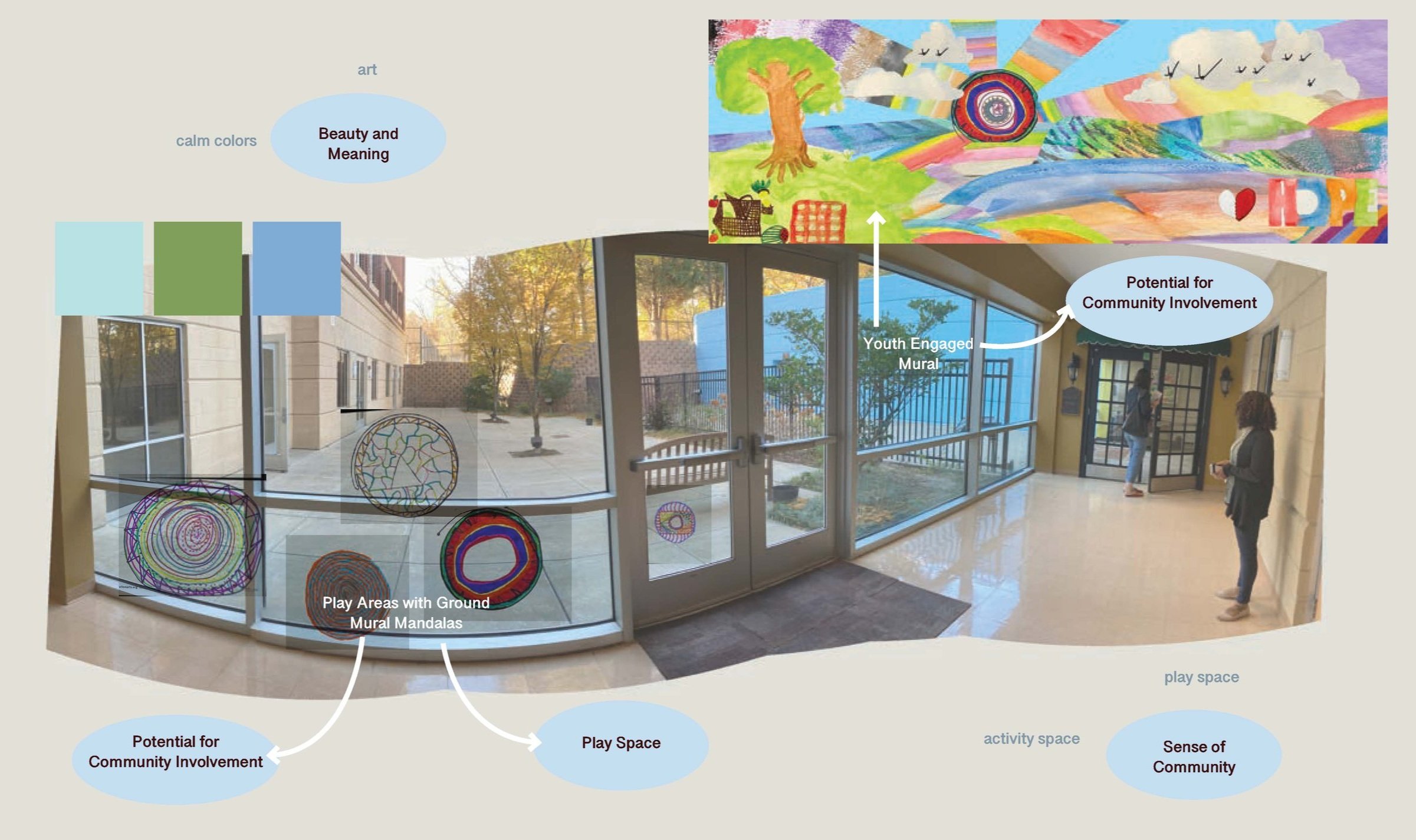












Collaborators: Landscape Design by MRS / Landscape constructed by Ed Castro Landscape / Trees donated and maintained by Trees Atlanta / Clients: Fulton County Arts and Fulton County Juvenile Justice Center
Concept: Trauma-Informed Design Approach; Closed Loop Construction; Depave; Natural Core; Wellness; Material Reuse; Pervious; Trees; Cool Colors; Soften; Civic Design; Restorative
Time: Construction in Progress (Phase I completed in Fall, 2023)
Place: Judge Romae T. Powell Juvenile Justice Center , Atlanta, Georgia
References: TRAUMA-INFORMED DESIGN DEFINITIONS AND STRATEGIES FOR ARCHITECTURAL IMPLEMENTATION report by Jill Pable and Anna Ellis
Project Overview
MRS was commissioned by Fulton County Arts to develop a trauma-informed design (TID) for the courtyard at the Judge Romae T. Powell Juvenile Justice Center, also known as the Fulton County Juvenile Court. Beyond hosting hearings for all Fulton County cases involving youth, the Court offers youth diversion programs, rehabilitation programs, mediation services, and counseling and legal aid for both court-involved families and the public.
The Courtyard, which is the only external space in the secure facility, is a unique melding ground where court staff, judges, court attendees and their families gather to dine, attend youth-centered programming and events, and pass time during sessions. The Courtyard of Second Chances was named by the court staff and inspired MRS’s design concept to break up and re-use existing concrete as a closed loop hardscape system of pavers and gravel. MRS designed the Courtyard to be ecologically sound and to the standards TID.
Trauma-Informed Design
The trauma-informed design approach (TID) MRS used was informed by the work Jill Pable and Anna Ellis have developed on TID for architecture and interiors. MRS translated their goals and methods developed in Trauma-Informed Design: Definitions and Strategies for Architectural Implementation to landscape architecture. Outlined below are the Primary Human Needs and goals MRS identified and carried forward from the report. These trauma-informed design approaches were used to develop conceptual design of the Courtyard of Second Chances and to serve those impacted by traumatic events, including but not limited to juvenile court attendees and their families, the court staff, and the judges.
TID Primary Needs:
1. Dignity and Self Esteem
2. Empowerment and Personal Control
3. Security, Privacy, and Personal Space
4. Stress Management
5. Sense of Community
6. Beauty and Meaning
Goals of TID:
1. Safe and inviting spaces
2. Reinforce individual’s sense of personal identity and ownership environment
5. Reduce / remove known adverse stimuli and triggers
6. Reduce/remove environmental stressors such as noise and crowding
7. Provide ways for individual to exhibit self-reliance / take care of their own needs.
8. Provide means for privacy and confidentiality
9. Reinforce the sense of stable and consistent policy support
10. Promote sense of community and collaboration worthy of trust
11. Separate individuals from others who may be in distress
Trauma-Informed Design for The Courtyard of Second Chances at the Fulton County Juvenile Justice Center


